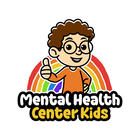A research paper published in Frontiers for Young Minds studied the way children help each other in learning tasks. It looked at the choices kids make when giving help to their peers and how those choices affect their learning and confidence.
The study found that the way children give help is not always as helpful as it seems. Some kinds of help can support learning, while others may hold kids back from improving their skills.
Moreover, it found that the way children help affects how others see them. Kids who get more direct answers may feel less smart and less confident. Classmates might also think they are not as capable. This can lower motivation and create a cycle where struggling children keep receiving direct answers instead of the kind of help that builds skills.
This research is important because it shows that not all help leads to positive outcomes. The type of help matters, and it’s important to teach kids the right way to support one another.
Understanding the Research
The study was done with children ages 7–9 in the Netherlands. Each child was asked to act as a “quizmaster” and help two peers with puzzles or math quizzes on a computer.
The children could choose to give either a hint (indirect help) or the correct answer (direct help). Before the quiz started, the kids were told that one peer had done very well on a past quiz and the other had struggled.
The peers were not real, but the children believed they were helping real classmates. This setup allowed the researcher to see if kids gave different kinds of help depending on how skilled they thought their peers were.
When the results were measured, some patterns appeared:
- When helping peers who were not struggling, children gave hints 71.2% of the time and direct answers 28.8% of the time.
- However, when peers struggled, the pattern changed — hints dropped to 53% and direct answers rose to 47%. This means children often “gave away” the answers to struggling classmates instead of supporting their learning.
- These results show kids were more likely to give struggling peers the correct answers instead of helping them learn how to solve the problems themselves.
Practical Strategies for Parents and Caregivers
The study makes an important point: helping isn’t always helpful if it takes away the chance to learn. With this in mind, here are some strategies to encourage the kind of help that truly benefits children:
Teach them to balance kindness with patience
Helping doesn’t always mean fixing the problem right away. Sometimes the kindest thing for them to do is to wait and give the other person time to figure it out.
Here’s how you can explain it to your child: “Imagine your friend is trying to build a puzzle. If you jump in and finish it for them, you’re being kind, but they don’t get the chance to learn. Sometimes kindness means giving them space and time to try on their own.”
Show what balanced helping looks like
Our children copy what they see more than what we tell them. Balanced helping means stepping in just enough to keep someone moving forward, but not so much that you solve the problem for them.
For example, if your child is stuck on a math problem, try asking them: “What’s the first step you know how to do?” instead of showing them the whole solution.
If they’re building with blocks and the tower keeps falling, you could say, “What if we try putting the bigger pieces on the bottom?” rather than taking over and building it yourself.
Talk about how different types of help feel
Children may not always realize how receiving direct answers versus hints can affect their confidence.
You can help reflect on this by asking questions like, “How would you feel if someone just gave you the answer without letting you try?” and “How would you feel if they gave you a clue that helped you figure it out yourself?”
These reflections teach kids that the way we help matters just as much as the help itself.
According to the author, teachers should guide and monitor peer helping to make sure it’s truly supportive and doesn’t end up discouraging some children.
Try our Managing Stress By Helping Others Worksheet and Social Skills Worksheets to teach children how to give and receive support in ways that strengthen both learning and relationships.





















































